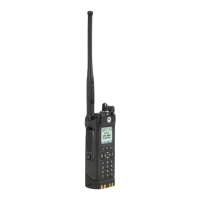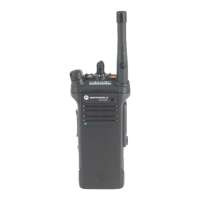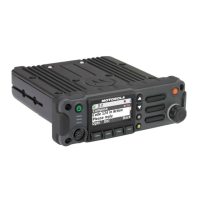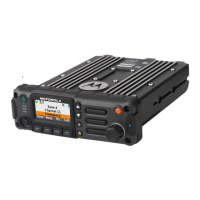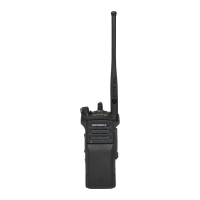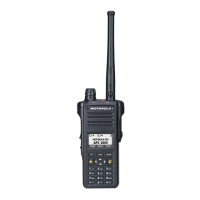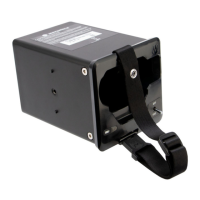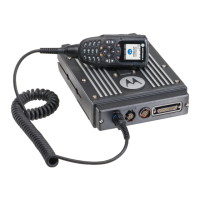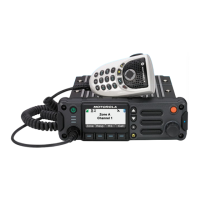5-8 Performance Checks: Transmitter Performance Checks
5.4 Transmitter Performance Checks
The following tables outline the performance checks for the transmitter.
Table 5-7. Transmitter Performance Checks – APX 3000
Test Name System Analyzer Radio Test Set Comments
Reference
Frequency
RF Control: Monitor
Meter: RF Display
Display: Bar Graphs
Freq: Selected radio TX
freq.
TEST MODE CSQ
channel* or
programmed
conventional
channel
PTT to continuous
(during the
performance
check).
UHF1: ±2 ppm
UHF2: ±2 ppm
VHF: ±2 ppm
(272–348 Hz)
700-800 MHz: ±1.5ppm
(1146–1305 Hz)
RF Power As above As above As above UHF1: 1–5 Watt
UHF2: 1–5 Watt
VHF: 1–5 Watt
700: 1–2.5 Watt
800: 1–3 Watt
Voice
Modulation
(external)
As above. Set fixed 1 kHz
audio level to 400 mV.
As above As above Deviation:
(12.5 kHz) ≥ 2.1 kHz, but
≤ 2.5 kHz
(25 kHz) ≥ 4.1 kHz, but
≤ 5.0 kHz
Voice
Modulation
(internal)
RF Control: Monitor
Meter: RF Display
Display: Bar Graphs
Freq: Selected radio TX
freq.
As above Remove
modulation input.
PTT to OFF
(center)
Press PTT button on radio.
Say “four” loudly into the
radio mic. Measure
deviation:
(12.5 kHz) ≥ 2.1 kHz but
≤ 2.5 kHz
(25 kHz) ≥ 4.1 kHz but
≤ 5.0 kHz
PL Modulation
(radios with
conventional,
clear mode,
coded squelch
operation only)
As above Conventional
coded squelch
personality (clear
mode operation)
or TPL channel
(test mode*)
PTT to continuous
(during the
performance
check)
Deviation:
(12.5 kHz) ≥ 375 Hz but
≤ 500 Hz
(25 kHz) ≥ 500 Hz but
≤ 1000 Hz
Secure
Modulation
(radios with
conventional,
secure mode,
talkaround
operation only)
As above Programmed
conventional
channel (secure
mode operation)
Load key into
radio.
As above Deviation:
≥ 3.7 kHz but ≤ 4.3 kHz
* See Table 5-4.
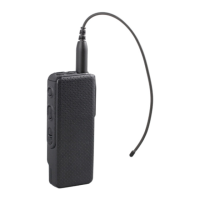
